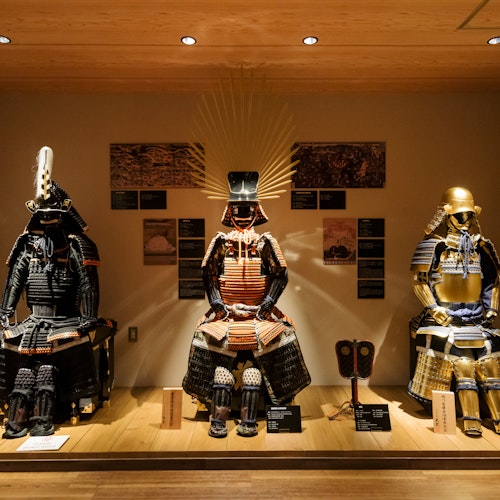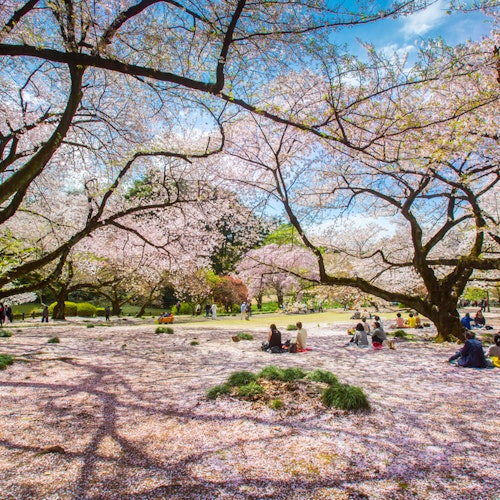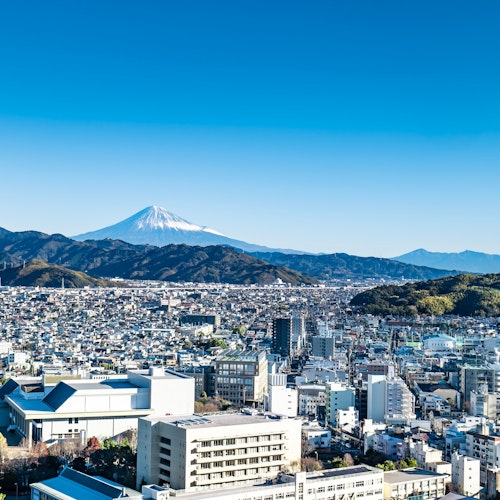
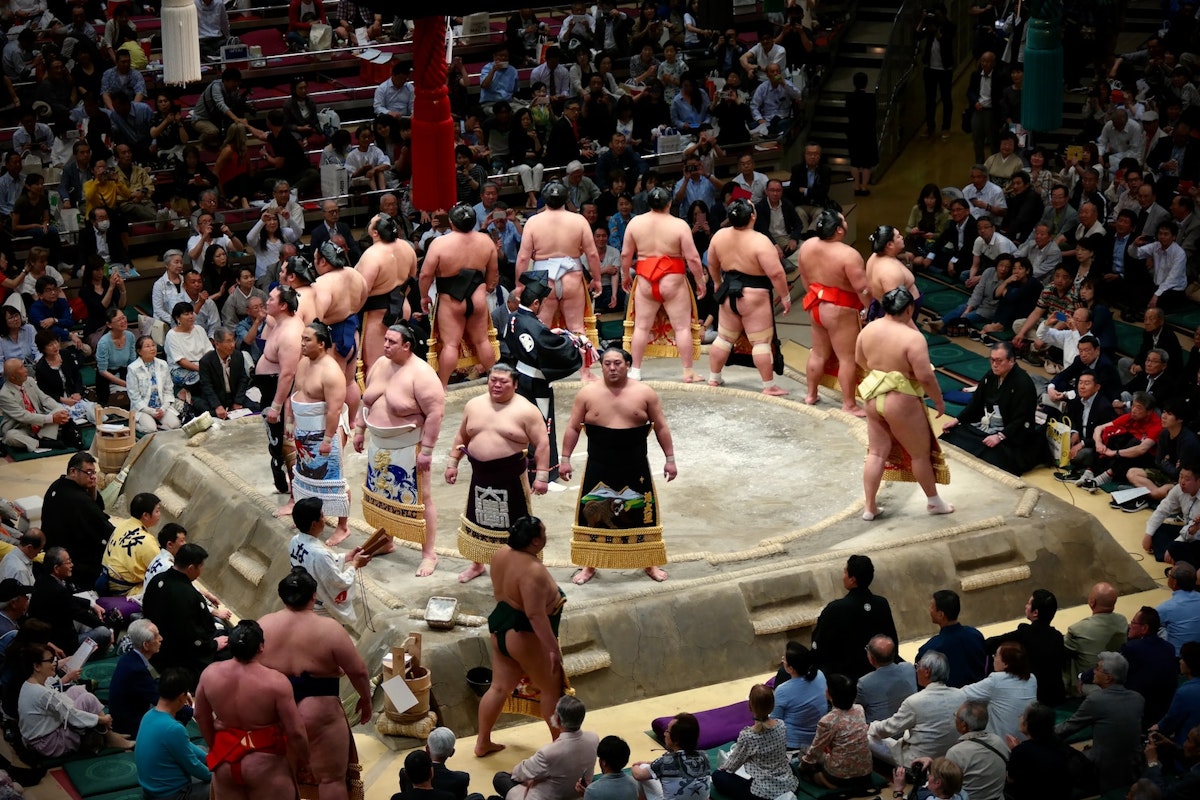
Sumo wrestling, a fixture of Japanese culture, has long been an embodiment of the country's rich and diverse heritage. It represents an exhilarating fusion of sport, tradition, and ceremony that is deeply entwined with Japan's historical narrative and societal values. Steeped in Shinto religious rituals and practices, Sumo offers a window into the heart of Japanese culture, combining athleticism, spirituality, and a profound respect for custom and ritual. It's a spectacle that extends beyond the physical contest within the dohyo, the sumo ring, painting a vivid picture of ancient traditions persisting amidst modern life.
In this article, we embark on a comprehensive exploration of Sumo wrestling, tracing its journey from religious rituals to a professional sport that captivates the nation and beyond. We delve into the rigorous lifestyle of the wrestlers, their intense training, and their communal living arrangements in the sumo stables. We transport you to the electrifying atmosphere of the Grand Sumo Tournaments, and illustrate how Sumo's influence permeates beyond the dohyo into arts, cuisine, and broader lifestyle in Japan. This journey aims to bring you closer to understanding Sumo, not just as Japan's national sport, but as a profound cultural phenomenon that continues to shape and reflect Japanese society.
Sumo wrestling, a sport synonymous with Japan, traces its roots back to the country's native Shinto religion. As a spiritual practice, its origins are steeped in mythology, with the very first Sumo match described in the ancient chronicles as a contest between deities. This divine encounter laid the groundwork for Sumo wrestling to develop into a ceremonial ritual, performed at Shinto shrines to appease the gods and ensure bountiful harvests. Its religious origins continue to shape Sumo's distinctive characteristics, from the purification rituals to the dohyo, the sacred ring of clay, making every match a symbolic reenactment of its mythological inception.
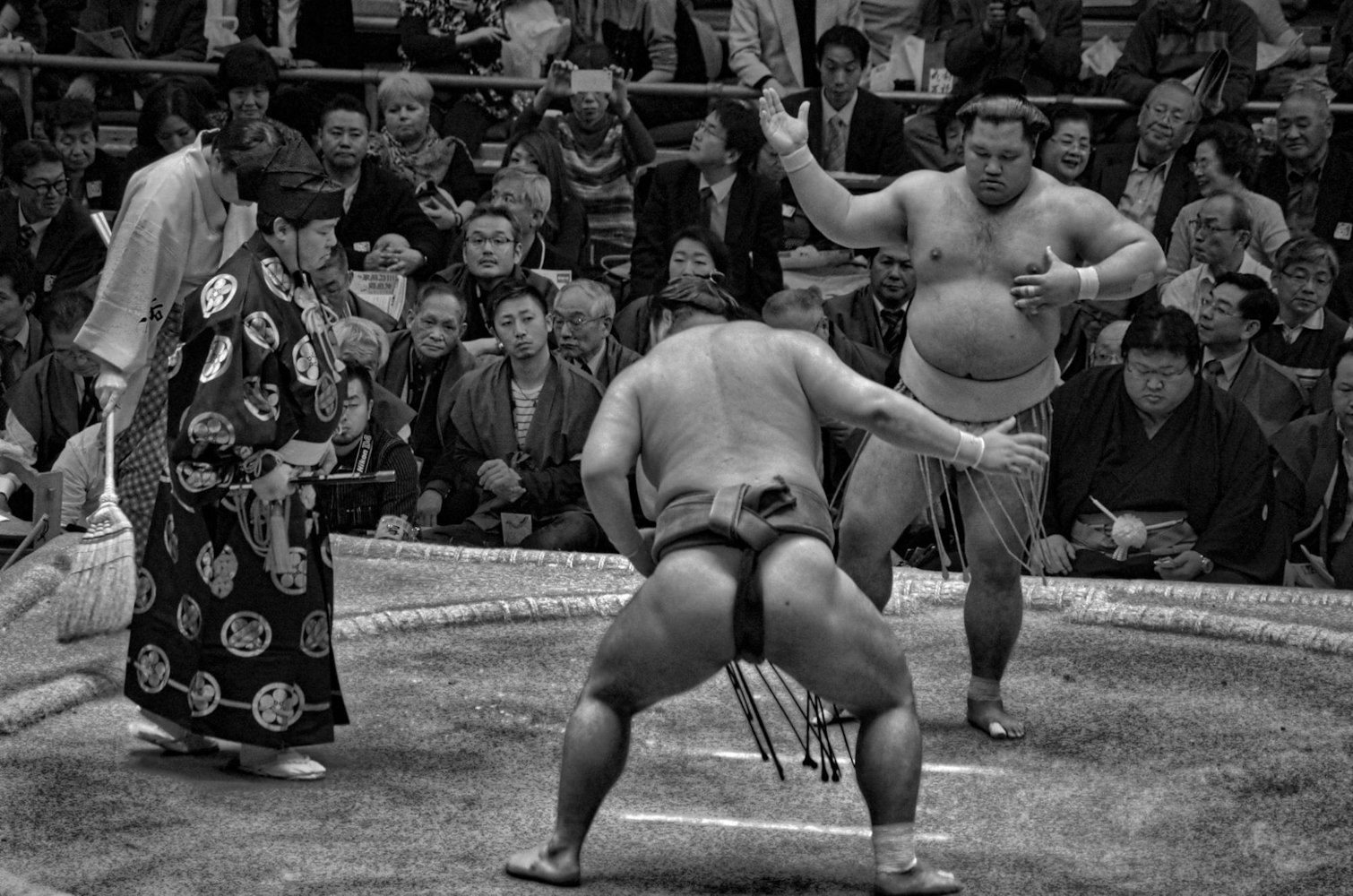
Image Credit: Alan Stoddard
The intertwining of Shinto and Sumo extends to the aesthetic elements of the sport. The traditional attire, the mawashi, bears a symbolic significance, representing the sanctity of the human body. The stomping ritual, known as shiko, is believed to drive away evil spirits, a vestige of its early Shinto roots. These religiously influenced practices lend Sumo wrestling an ethereal quality, a blend of physical prowess and spiritual devotion, rendering it much more than a mere competitive sport.
Over centuries, Sumo wrestling began to transition from a spiritual practice to a sport enjoyed by the masses. In the Heian period (794-1185), it gained prominence as a martial art trained by samurai warriors to enhance their combat skills. It was during the Edo period (1603-1868), however, that Sumo truly started to resemble its modern form. As urban culture blossomed, professional Sumo tournaments—known as 'basho'—became popular public events, drawing spectators from every strata of society.
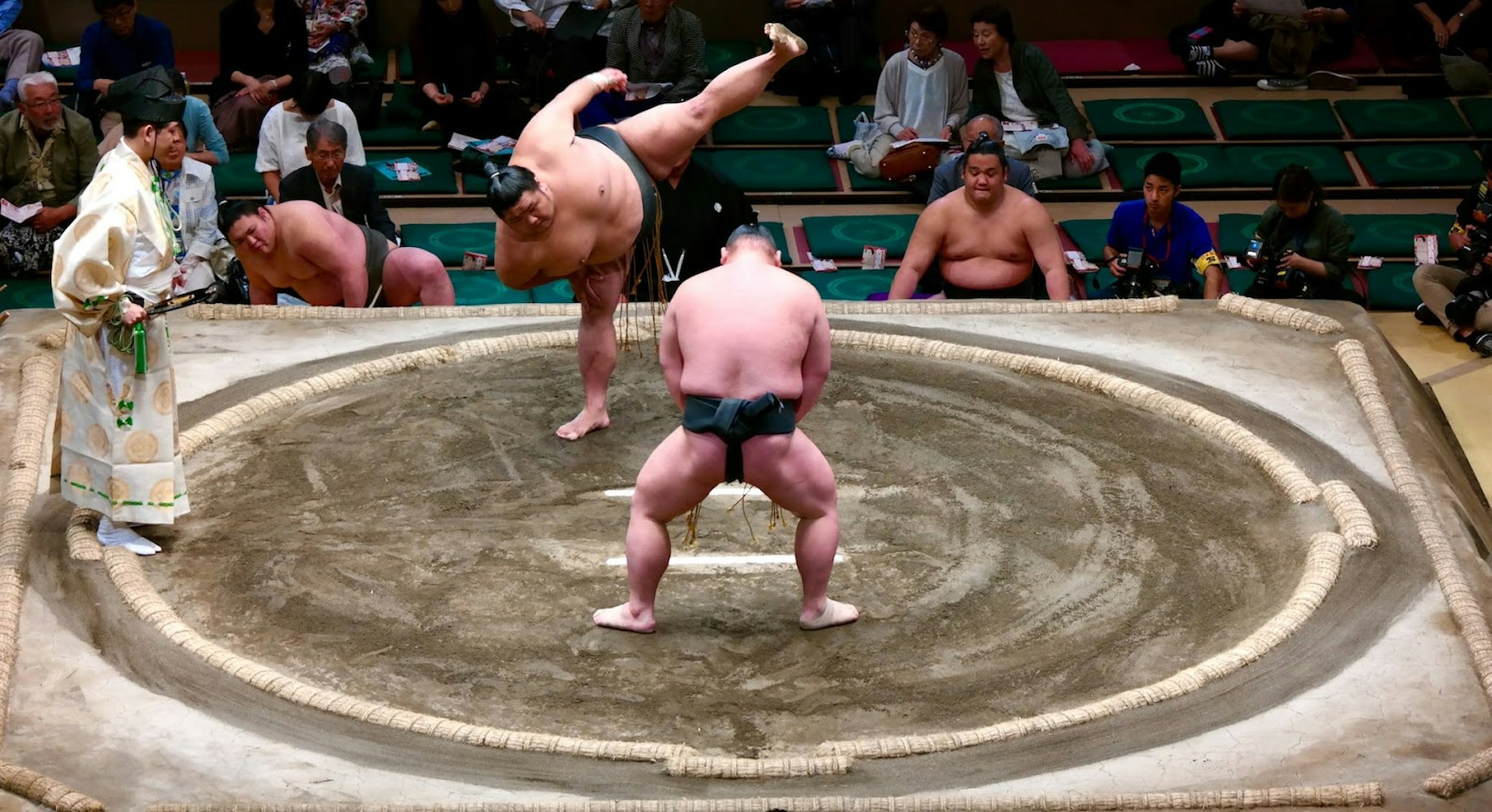
Despite its transformation into a professional sport, Sumo retained its spiritual essence. The wrestlers, or rikishi, still performed the ancient Shinto purification rituals before every match, the dohyo remained a sacred space, and each victory was considered a divine favor. This adherence to tradition has allowed Sumo wrestling to continue as a symbolic thread linking modern Japan to its religious and historical roots, encapsulating the spirit of the nation in each thunderous collision within the sacred ring.
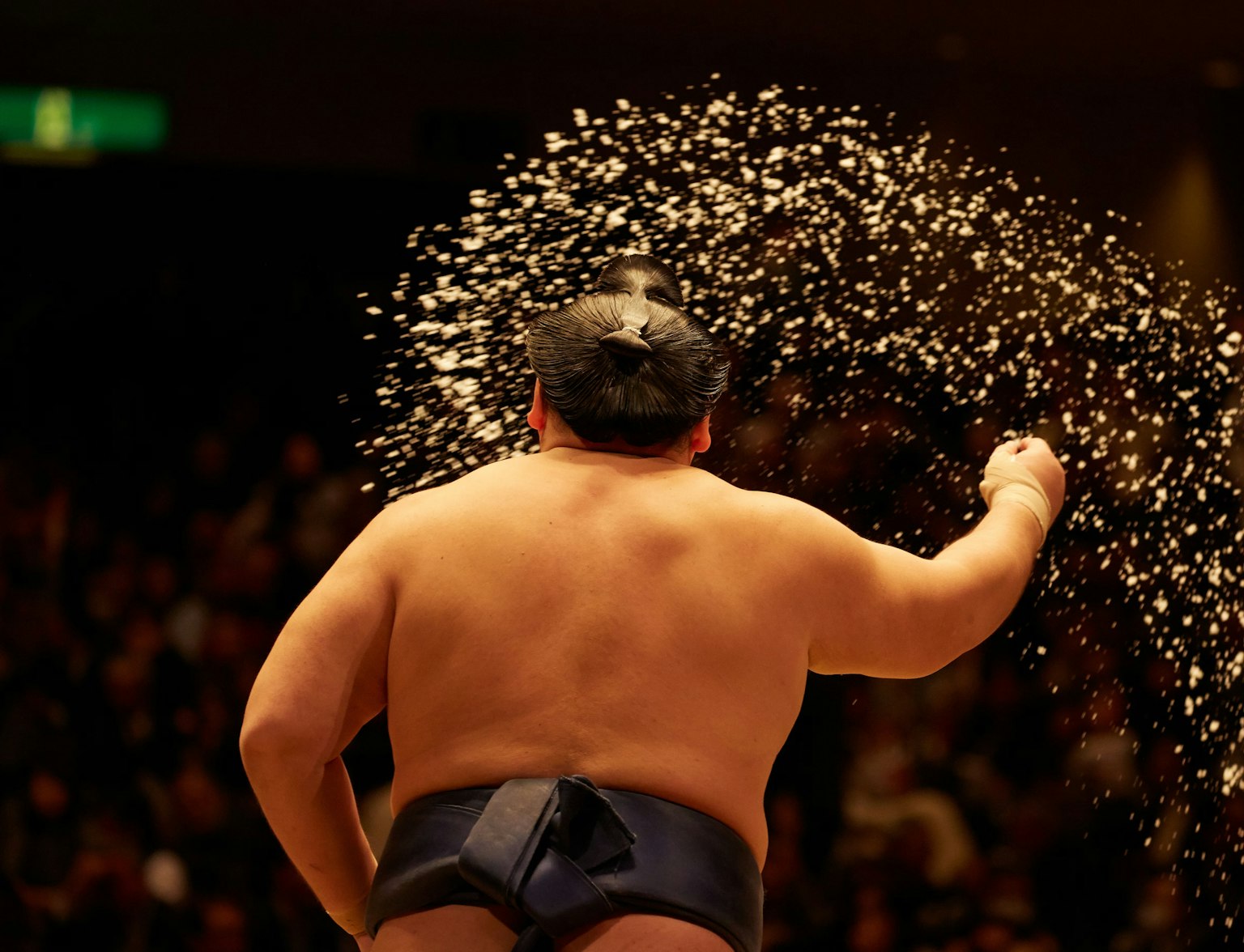
Unlock the secrets of this ancient sport that holds a cherished place in Japan's heart.
In the world of Sumo, the dohyo, or ring, isn't just a battleground; it's a sacred space symbolizing the universe in Shinto cosmology. Constructed from clay and sprinkled with purifying salt, it’s within this circle that the contest of strength and strategy unfolds. The rules of Sumo are deceptively simple; a wrestler loses if any part of his body other than the soles of his feet touches the dohyo, or if he is pushed or thrown out of the ring. However, the tactics and techniques used by the rikishi to achieve this are diverse, ranging from powerful slaps and strategic grips to deft side steps.
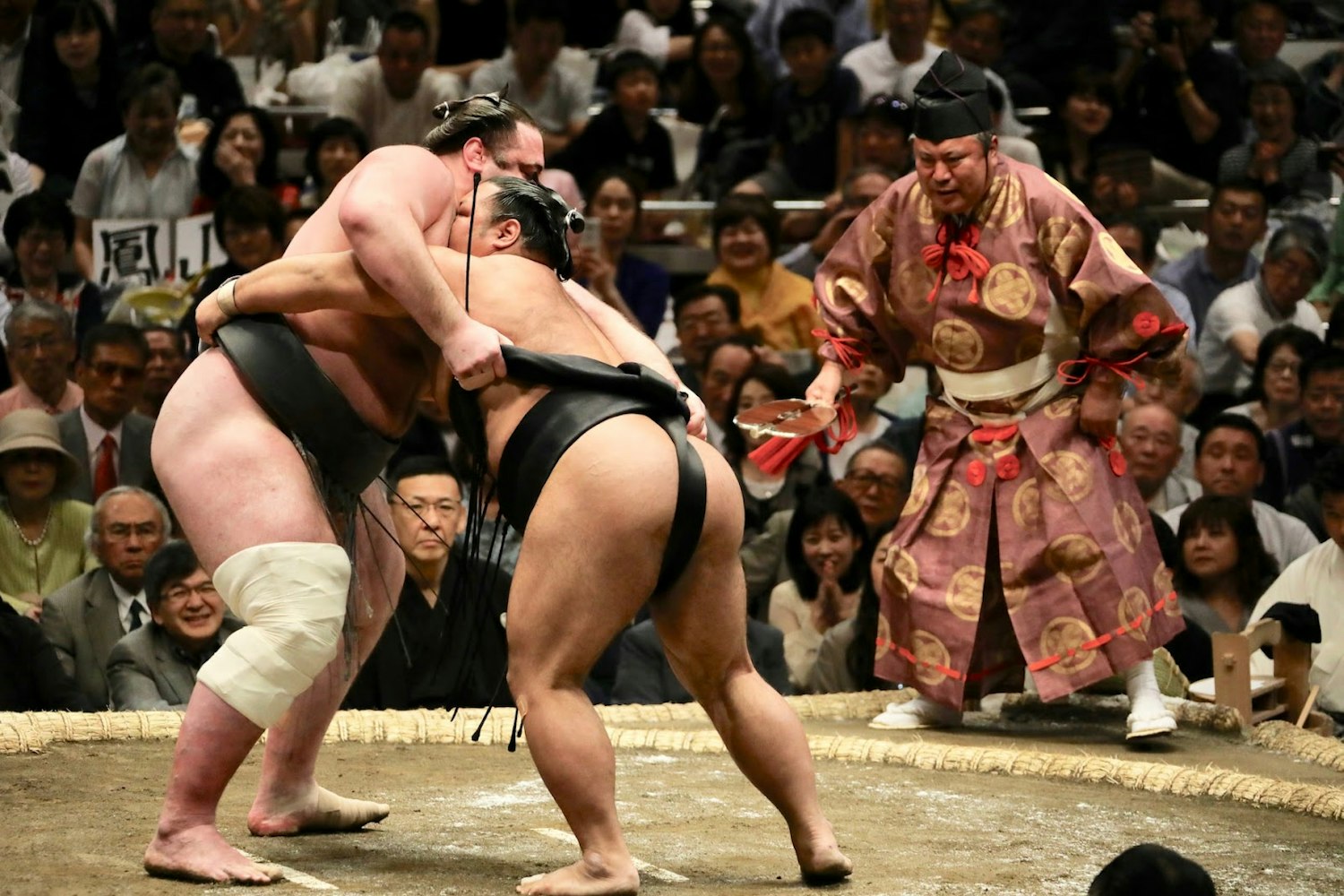
Before every match, the rikishi engages in an array of Shinto purification rituals. This begins with the stomping ceremony, or shiko, a display of strength aimed at driving away evil spirits. Wrestlers rinse their mouths with water and cleanse their bodies with a paper wand known as 'chikara-mizu' and 'harai-gushi' respectively, symbolizing purification. These rituals, echoing Sumo's spiritual origins, imbue each match with a sense of solemnity and sanctity, transporting the audience back to the sport's ancient religious beginnings.
Stepping into the life of a rikishi reveals a world of discipline, endurance, and adherence to tradition. Their day starts early with rigorous training sessions known as Keiko, which can last for several hours and involve a variety of strength-building exercises and practice bouts. Their diet is equally important; they consume a special high-calorie, protein-rich stew called chankonabe, along with copious amounts of rice, to build bulk and strength.
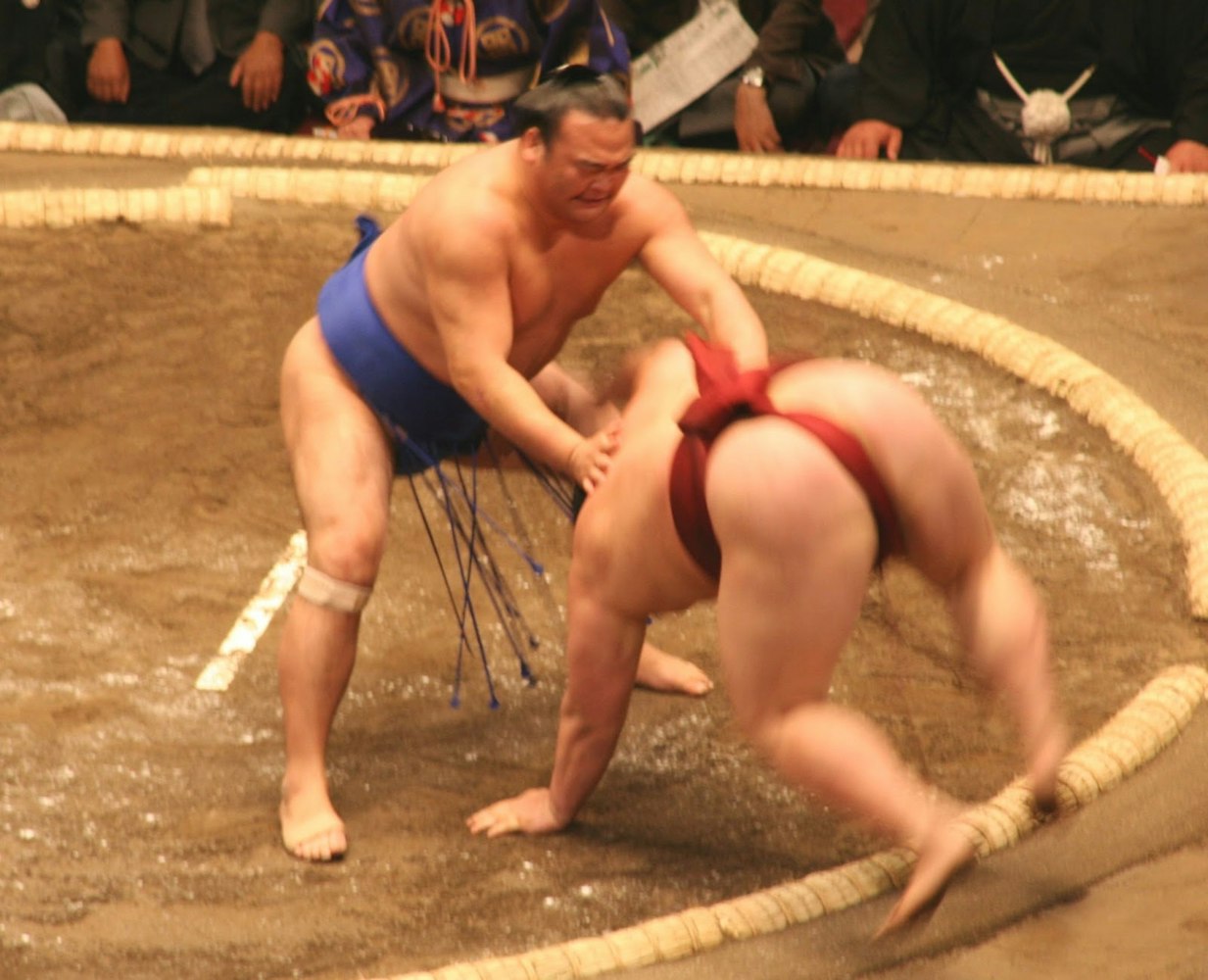
Despite their imposing physical presence, the rikishi follows a lifestyle of simplicity and humility. They adhere to a strict hierarchy, with lower-ranked wrestlers performing chores for their senior counterparts. Even their attire, both inside and outside the ring, adheres to traditional Japanese clothing, further underlining their commitment to preserving the customs and conventions of this ancient sport.
The heya, or Sumo stables, are more than just training centres; they're communal living spaces that function like miniature societies. All aspects of a rikishi's life, from training and meals to sleep and social interactions, are governed by the rules of the heya. Each stable is led by a stablemaster, an elder in the Sumo association, who mentors the wrestlers and oversees their daily routines.

The hierarchy within a heya mirrors that of the Sumo wrestling ranks. Lower-ranked wrestlers wake up the earliest, do most of the cleaning and cooking, and eat last. As wrestlers climb the ranks, they earn more privileges and responsibilities. Living and training in a heya instills a deep sense of respect, humility, and camaraderie among the rikishi, essential traits that go beyond the Sumo ring and reflect the larger Japanese societal norms.
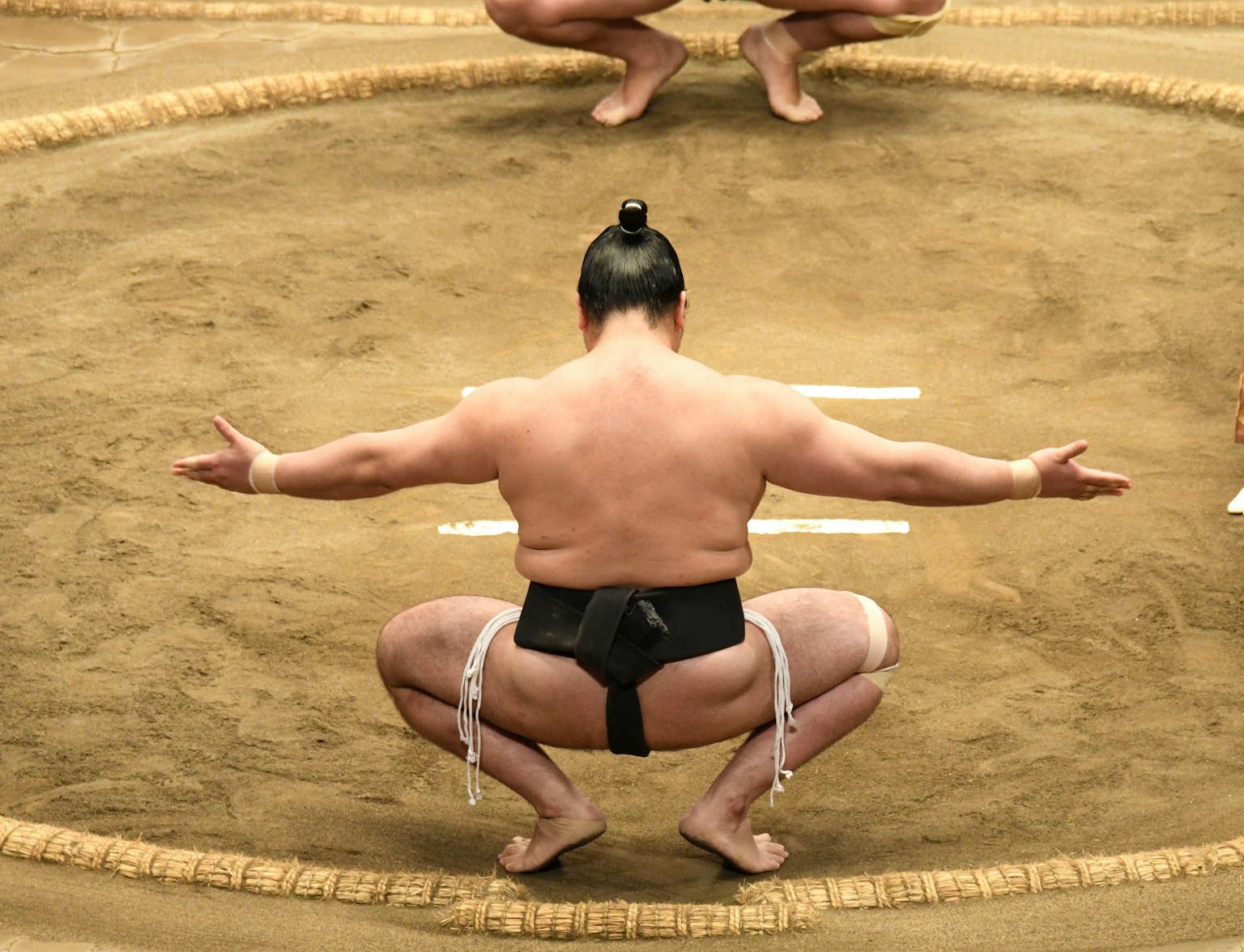
Visit Taima district in Nara where Sumo is born.
The ultimate spectacle in Sumo wrestling is the Grand Sumo Tournament, or Basho, which is held six times a year across various locations in Japan, including Tokyo, Osaka, Nagoya, and Fukuoka. These 15-day events are a showcase of power, skill, and strategy, where the rikishi compete for prestige and promotion within the sport's hierarchical structure. A unique blend of intense competition and ceremonial tradition, the Basho draws thousands of spectators from across Japan and around the world.
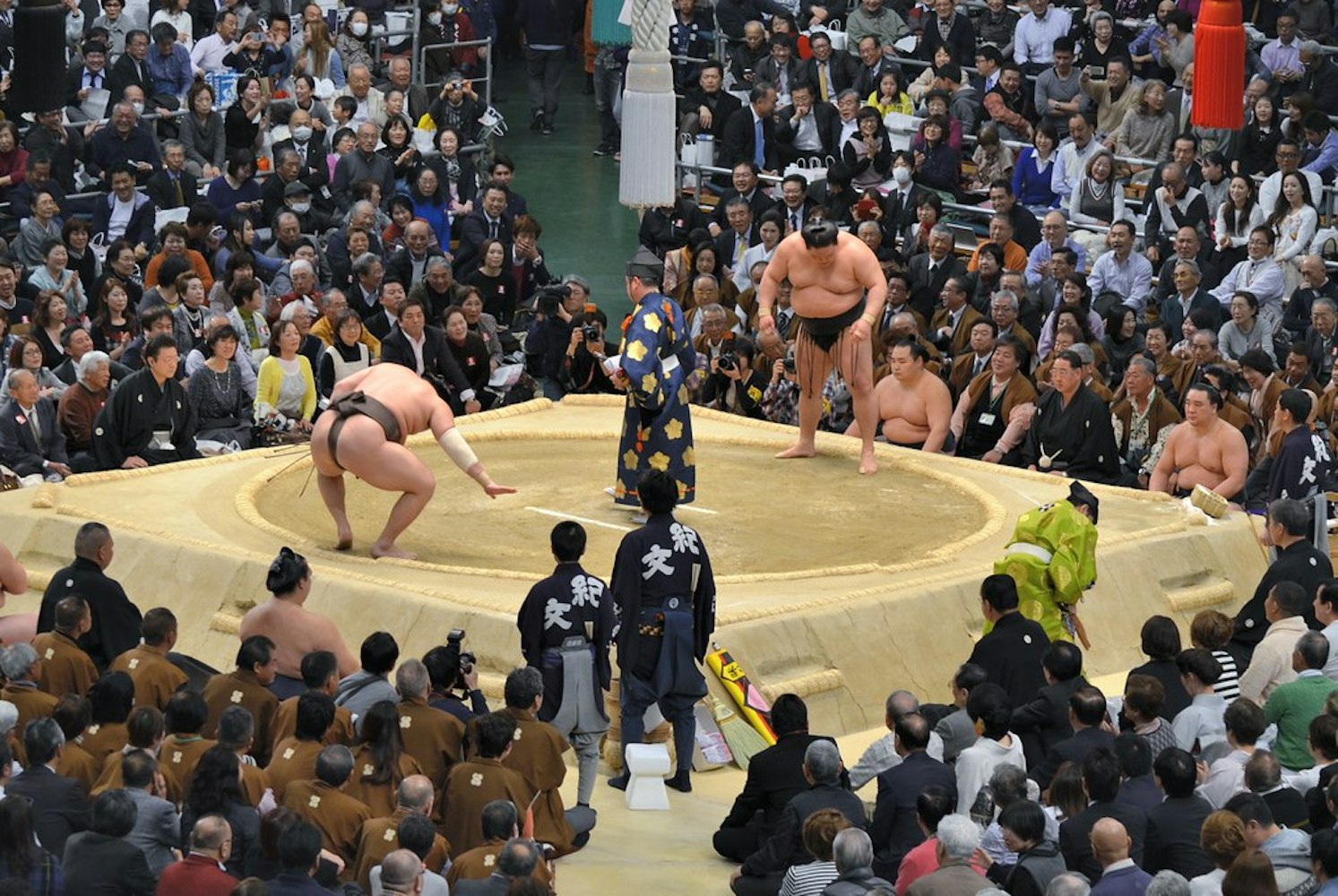
Image Credit: jpellgen
The atmosphere at a Basho is electrifying, starting with the lower-ranked wrestlers' matches in the morning and building up to the top-division bouts in the late afternoon. The tension in the dohyo, the crowd's anticipatory silence, and the thunderous applause following a decisive match make each tournament an unforgettable experience. To witness a Basho is to truly appreciate the grandeur of Sumo, from the wrestlers' incredible physical prowess to the sport's deeply ingrained cultural significance.
For those looking to delve deeper into the world of Sumo, observing an asageiko, or morning training session, offers an intimate glimpse into the sport. During these sessions, held at the heya, visitors can witness the rikishi practicing their techniques, building their strength, and adhering to the disciplines that form the foundation of their sumo careers.
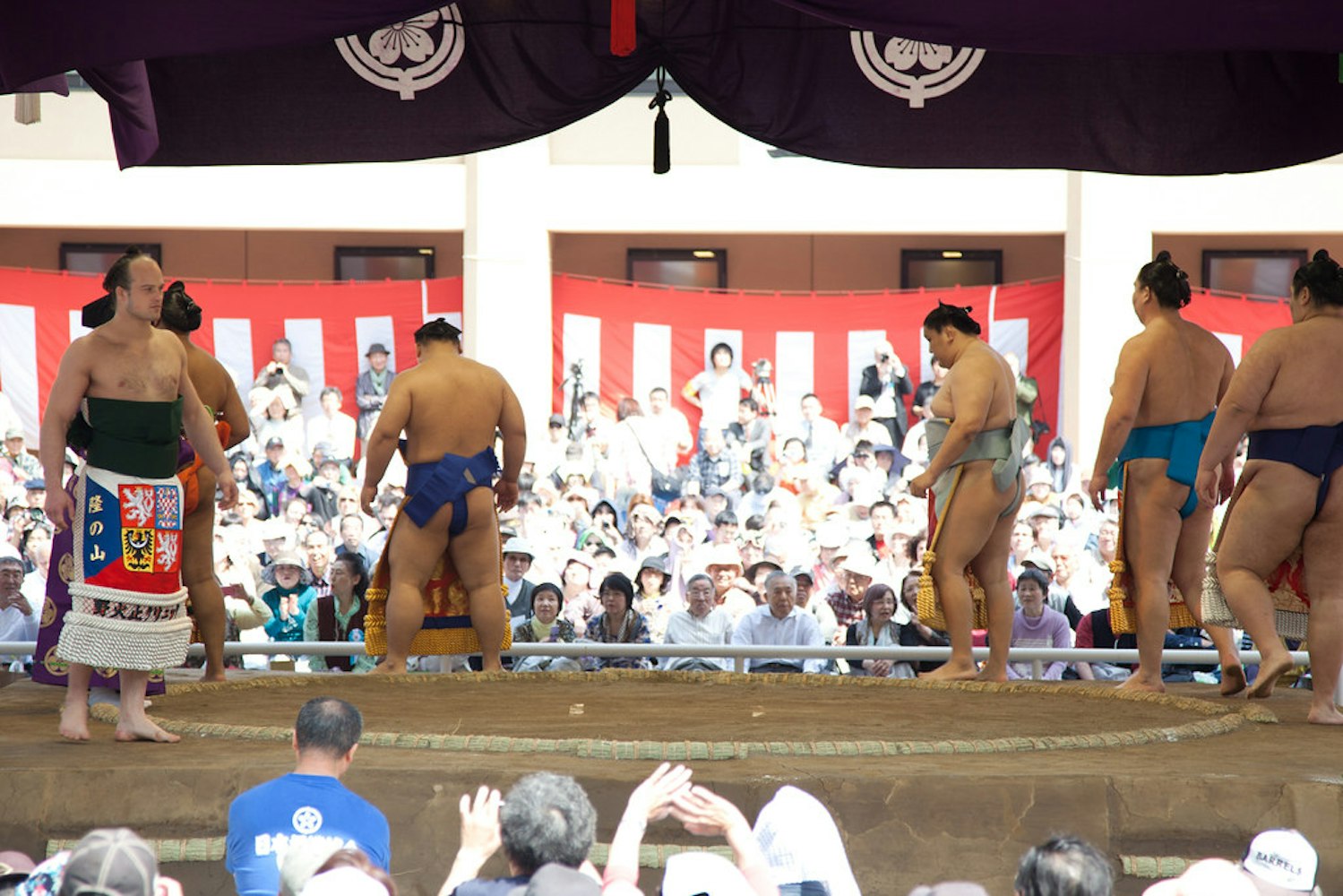
Image Credit: camknows
The asageiko is a grueling and rigorous affair, characterized by repeated bouts and strength training exercises. There's a rawness to these sessions that can be quite revealing. In the absence of the ceremonial pageantry of the tournaments, the focus shifts to the sheer effort, perseverance, and dedication of the rikishi. Watching an asageiko not only allows visitors to better understand the sport, but also to appreciate the rikishi's commitment and devotion to their craft.
Sumo's cultural influence extends to the realm of culinary arts. The traditional Sumo diet, designed to build mass and strength, centers around a nutritious, protein-packed stew called chankonabe. Comprised of a rich broth, generous servings of vegetables, meat, or fish, and often served with rice, chankonabe is integral to a rikishi's diet.

However, the popularity of chankonabe extends beyond the Sumo stables. Many restaurants across Japan, particularly in Sumo districts, serve this hearty dish, and some are even run by retired wrestlers. The preparation and enjoyment of chankonabe symbolize a broader cultural connection with Sumo, allowing fans and food enthusiasts alike to partake in a tradition intimately linked to this iconic sport.
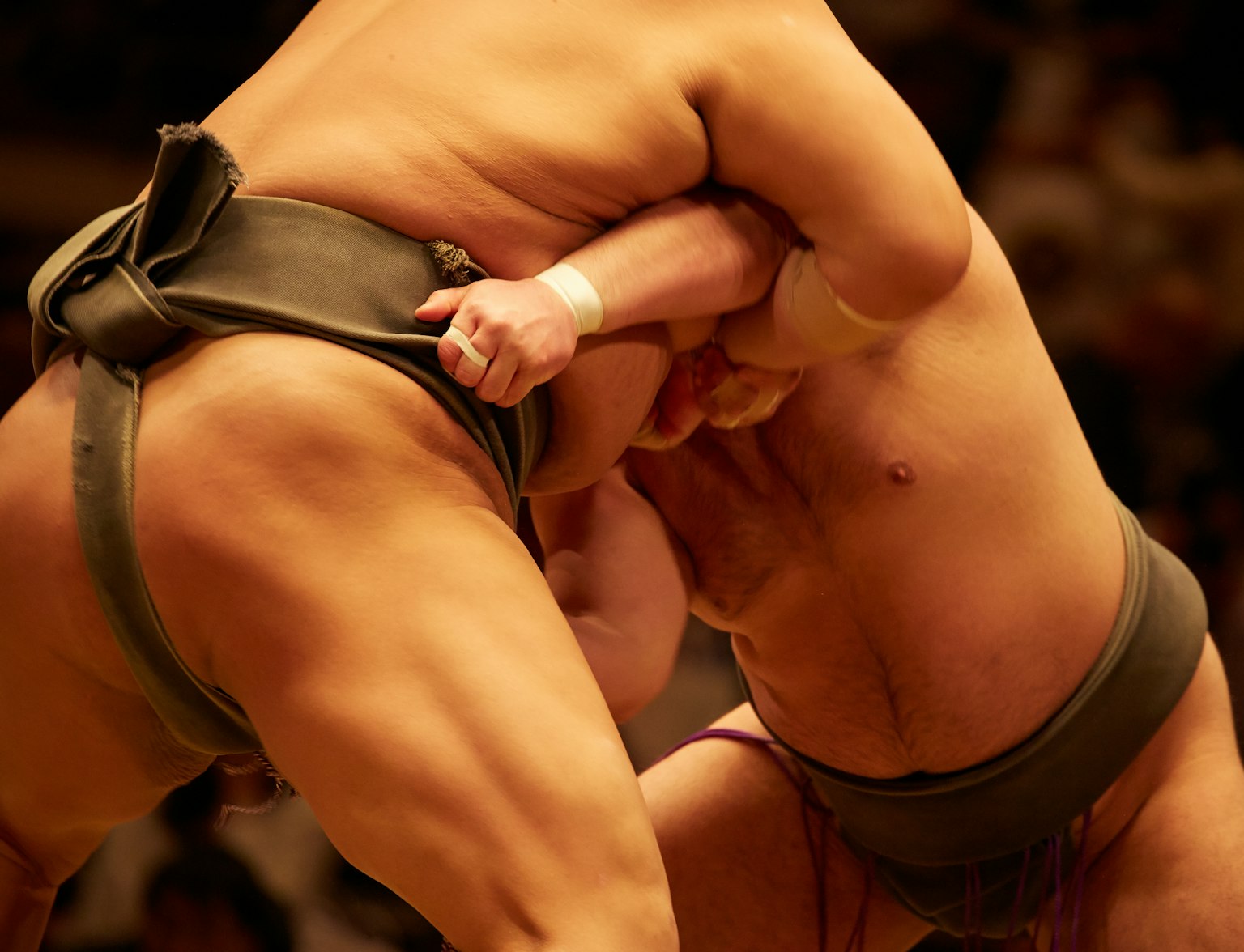
This experience offers a rare and intimate look into the daily lives of sumo wrestlers.
Sumo's influence permeates multiple facets of Japanese arts and culture. The dynamic poses, the ceremonial attire, and the raw, physical intensity of the sport have provided ample inspiration for traditional Ukiyo-e woodblock prints and contemporary artwork. These artistic representations often immortalize legendary wrestlers and iconic moments in the sport, offering a visual narrative of Sumo's rich history.

In literature and cinema, stories about Sumo wrestlers explore themes of honour, perseverance, and the conflict between tradition and modernity, reflecting societal values and norms. Furthermore, the fashion industry has drawn inspiration from the sport, with Sumo-inspired designs appearing on international runways. These varied artistic echoes underline the profound cultural imprint of Sumo, illustrating its influence far beyond the confines of the dohyo.
Sumo wrestling, with its deep historical roots and its powerful presence in the present-day cultural landscape, serves as an evocative symbol of Japan's rich heritage. It provides a fascinating lens to explore and understand the Japanese ethos, where modernity coexists with tradition, respect for the hierarchy is instilled, and spiritual practices permeate daily life. This exploration of Sumo sheds light on these unique aspects of Japanese culture, revealing the sport's ability to transcend the bounds of a mere athletic contest and embody a nation's identity.
As Sumo continues to captivate audiences worldwide, it also invites them to delve deeper into the customs, values, and narratives that underpin the sport. From the rigorous training regimes and communal lifestyle of the rikishi to the vibrant atmosphere of the Basho and the cultural resonance beyond the dohyo, Sumo presents a multifaceted narrative enriched with history, religion, discipline, and community.
